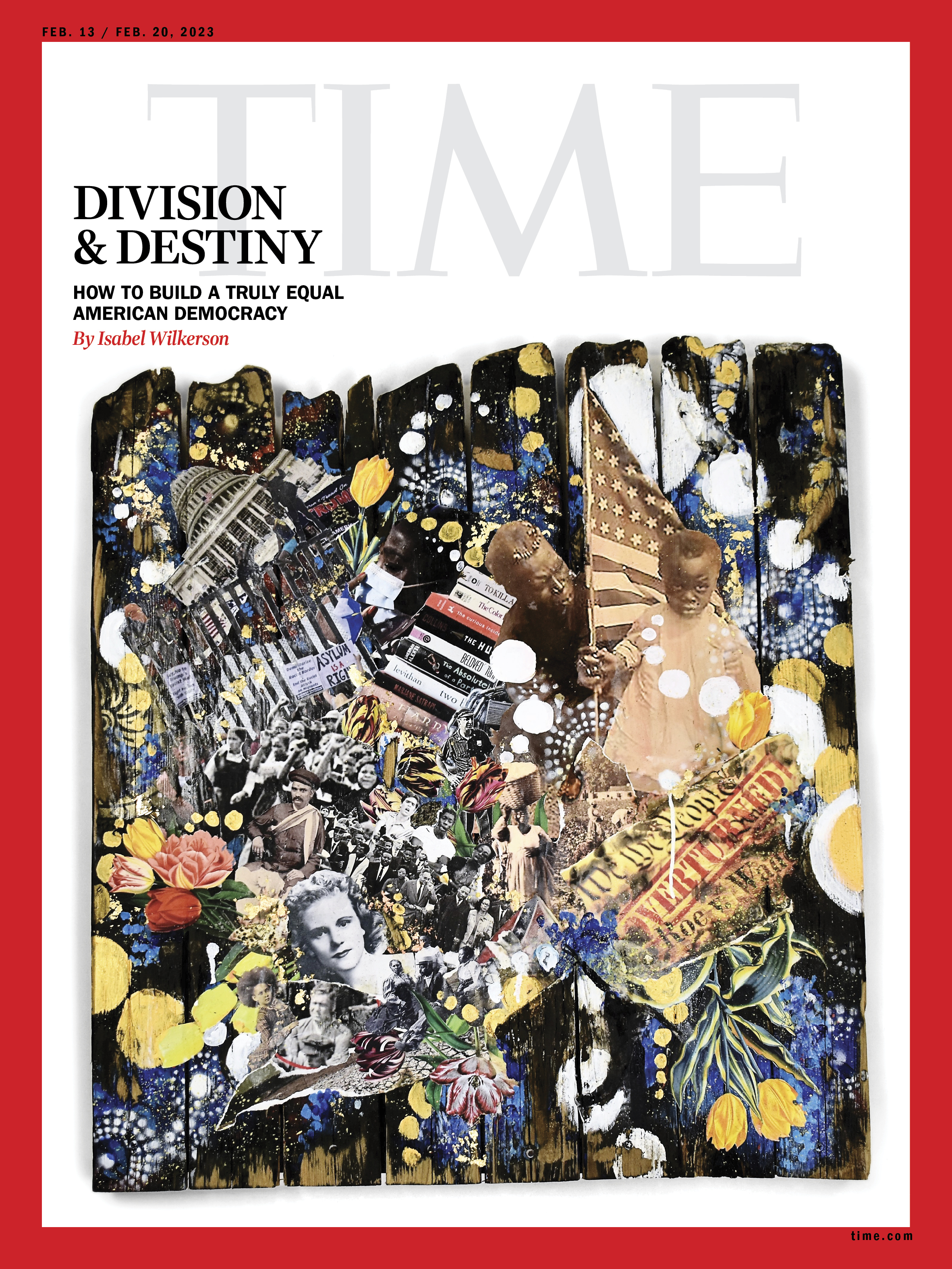
For a corresponding visual narrative to accompany a new piece by Isabel Wilkerson, author of Caste: The Origins of Our Discontents, TIME turned to artist Lavett Ballard, to create a cover that would—like Wilkerson’s work—present a challenge to the reader and to America: How did we arrive at this moment, a moment when the barriers to equality in America are so clear? And what is the way forward?
Ballard, who created cover art for TIME’s 100 Women of the Year project in recognition of the women who led the civil rights bus boycotts of the 1950s, brought together images speaking to themes including the history of American slavery, book banning, and the Jan. 6 attack on the U.S. Capitol. But she also reached for images of people who show an alternate, positive side of American history, from Martin Luther King Jr. to lesser-known figures such as Viola Liuzzo.
Read the cover story: From Jan. 6 to Tyre Nichols, American Life Is Still Defined by Caste
Ballard’s visual practice involves layering images, mostly of ordinary African Americans, to create visual connections from past to present. The artist’s use of picket fences is powerfully symbolic of an idyllic life, and also of exclusion, and the idea that on the other side of that fence lies inclusion and safety. It is a call to viewers to broaden their ideas of who is worthy of protection and safety and whose stories get told.
For this piece, Lavett says she wanted to depict a multi-racial group of ordinary people who stood up to the powerful forces of caste-based oppression throughout history, folks who could serve as guides and inspiration to us in finding a way forward.
The history of how ordinary people can and do stand against the injustice of the caste-enforced social order, at great personal risk, is too often forgotten, Lavett says. This piece is her visual manifestation of that history, in hopes that acknowledgment of that past will allow all of us to navigate a way forward—a way that may not be easy, but that can lead to a better and more equitable world.
More Must-Reads from TIME
- Introducing the 2024 TIME100 Next
- The Reinvention of J.D. Vance
- How to Survive Election Season Without Losing Your Mind
- Welcome to the Golden Age of Scams
- Did the Pandemic Break Our Brains?
- The Many Lives of Jack Antonoff
- 33 True Crime Documentaries That Shaped the Genre
- Why Gut Health Issues Are More Common in Women
Contact us at letters@time.com